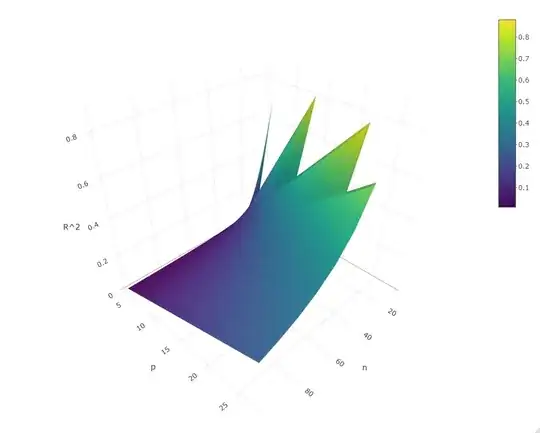As per this question, we have
$$R^2 \sim Beta\left (\frac {p-1}{2}, \frac {n-p}{2}\right)$$
in view of your assumption of error normality (the result that the regressors are also multivariate normal would not be necessary).
The answers there also show that the mode of this distribution (you might of course also want to look at the mean or other characteristics of the distribution) is
$$\text{mode}\,R^2 = \frac {\frac {p-1}{2}-1}{\frac {p-1}{2}+ \frac {n-p}{2}-2} =\frac {p-3}{n-5} $$
For the distribution to have a unique and finite mode we must have
$$p> 3,\;n >k+2. $$
Hence, we see that, for fixed $p$, the mode decreaes to zero with $O_p(1/n)$, but modes quite a bit away from zero are to be expected for "overfitted" models for which $p$ is large relative to $n$.
n <- seq(10, 100, 10)
p <- seq(4, 30, 3)
modes <- outer(n, p, function(n, p) ifelse(n>p+2, (p-3)/(n-5), NA))
library(plotly)
plot_ly(x=n, y=p, z=t(modes), type="surface") %>% layout(
scene = list(
xaxis = list(title = "n"),
yaxis = list(title = "p"),
zaxis = list(title = "R^2")))

